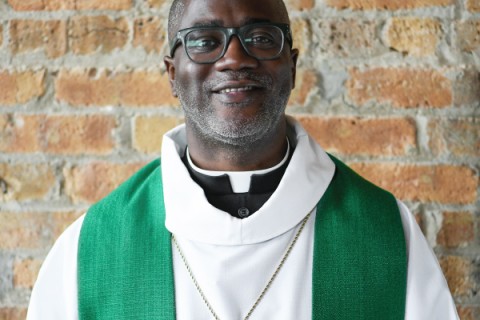Risky business
It is highly unlikely that the late Paul Holmer ever would have read a book about youth ministry. Holmer, who taught philosophical theology at the University of Minnesota and Yale Divinity School, was not particularly interested in practical ministry studies on their own terms. He taught courses on Kierkegaard and Wittgenstein. In a particularly popular course offered during the early 1980s at Yale, titled “Emotions, Passions and Feelings,” Holmer argued for the importance of passion in understanding Christian theology. Feelings and moods are fleeting, Holmer maintained, the product of circumstances and personalities. But a passion is forever. Religious life, Holmer taught, cannot simply concern feelings and moods, but instead takes shape out of a deep and enduring passion, even as theology itself brings shape to human passions.
It’s at this point that the thought of Paul Holmer meets the world of youth ministry, at least as youth ministry finds voice in the writings of Kenda Creasy Dean, practical theologian and professor of youth ministry at Princeton. According to Dean, the problem facing ministry with youth is a problem of mainline church life generally: a crisis of passion. Churches living tepidly, rather than passionately in identification with the passion of Christ, have little to offer to youth who are searching for something “worth dying for” and therefore also something for which to live.
This book is not a typical how-to manual for youth groups. Dean offers a carefully crafted, sophisticated argument that gaps have arisen in the practice of youth ministry because for years ministry to young people has been located “in the shallow end of the theological pool” within a church short on passion. Adults who are themselves afraid to venture into that pool’s deep end, where they would risk identification with the passion of Jesus Christ, can hardly lead young people there.
Dean frames adolescence as a time when passion moves to the foreground, propelled by a combination of hormonal surges and a longing for deep encounters with the Divine. Youth want to attach their lives to something worth living for. They know—and the rest of the church stands to learn this from them—that things worth living for must also be worth dying for.
Passion, she asserts, is “loving something enough to suffer for it.” Dean affirms that Christian faith ultimately concerns love more than suffering, but here the balance tips in the direction of suffering as she takes seriously the pain and yearnings of youth and the need to retrieve a more complex notion of passion in the church—one that includes real risk.
Practicing Passion begins with an exploration of the nature of passion and its connections with youth. Like Kierkegaard, Dean sees young people as especially well equipped for pathos. Because they are keenly aware of both love and suffering, they are particularly well suited to engage in passionate practices within Christian community. That is what living in deep connection with the passion of Christ means, she argues. But churches largely abdicate their identification with such costly love, leaving few opportunities for young people to participate in the church as a community that practices God’s passion.
Naturally, as Dean explains in the book’s second section, when the church does not live out passion in its practices, youth take their passions elsewhere. They commonly fall prey to the larger human tendency to confuse ultimate passions (the kinds of passions that are fully engaged only in connection to the holy) with fleeting attractions to causes, or with transient sexual feelings that only mirror the deeper intimacy they passionately seek. Exploring three dimensions of passion—fidelity, transcendence and community—Dean addresses the relationship between processes of identity formation among youth today and the distortions of passion common in contemporary society.
In the book’s final section, Dean proposes that youth ministry be grounded in young people’s participation in the practices of a passionate church. To achieve this, the church must retrieve its historical “curriculum of passion,” which is found in the memory of Christ’s passion and in the “practical piety” of the Christian community as it participates in the missio dei.
One of the best features of Practicing Passion is Dean’s colorful use of metaphor and lively turns of phrase throughout, which make for a pleasurable read. My favorite metaphor is that of youth ministry taking place in the “shallow end of the theological swimming pool.” Dean also writes of “Christian parachuting,” that distortion of compassion in which Christians drop in to a situation long enough to distribute goods without ever taking on another’s burdens as their own. “Jesus-the-Friendly-Ghost theology” is stereotypical youth ministry theology that stems from the interpersonal needs of young people rather than from scriptural witness to Christ.
One of the book’s limitations is its facile treatment of the ways ethnic, class and gender difference intersect with several of the book’s main theological concepts, such as passion, suffering and martyrdom. For example, Dean’s acknowledgment of feminist critiques of Christian atonement theologies seems more like an obligatory footnote to cover her bases than a substantial engagement with a group of theologians whose perspectives are worthy of consideration.
Dean offers a theological prescription not only for youth ministry but also for the whole church. Her bottom line is that “a passionless church will never address passionate youth.” For that matter it will never address passionate adults either—which is why even Paul Holmer would have enjoyed reading about Dean’s approach to youth ministry.






